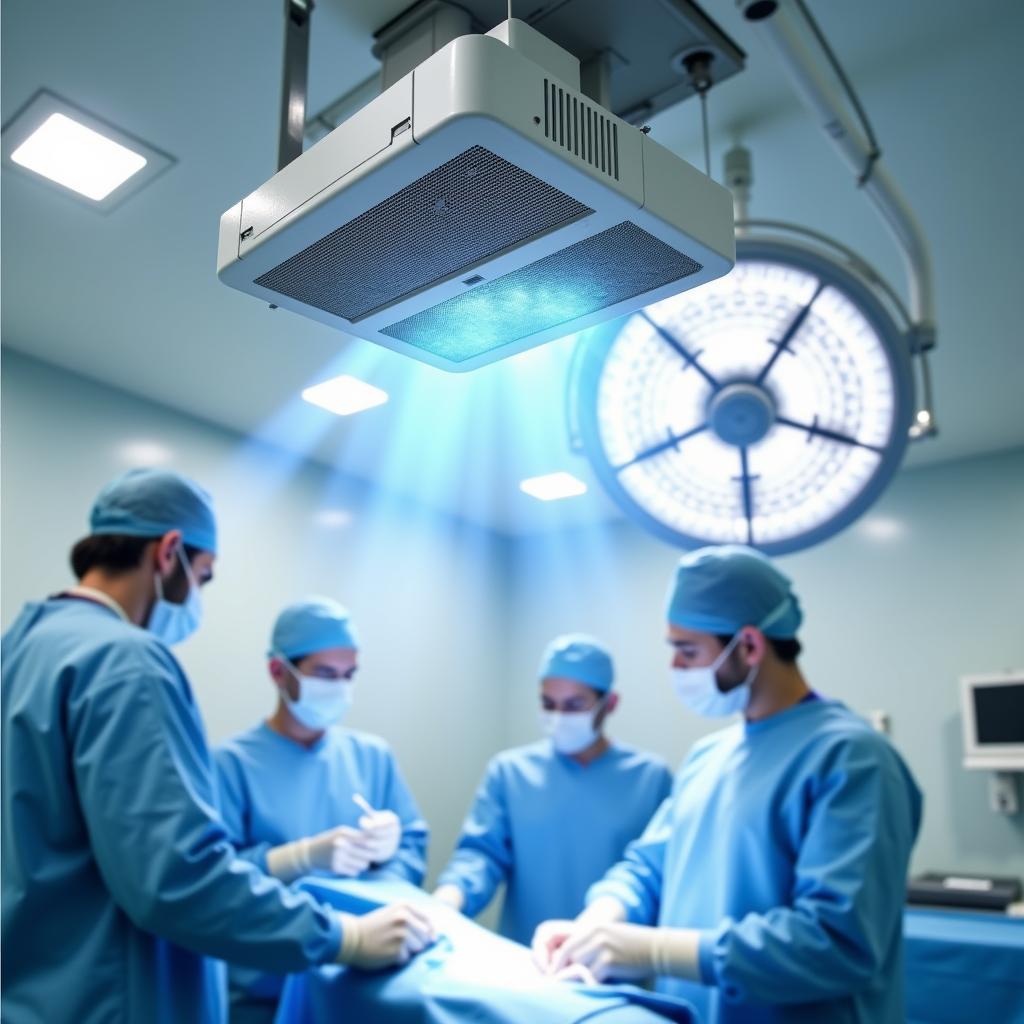Hospital Air Purification is critical for maintaining a sterile and healthy environment, protecting patients, staff, and visitors from airborne illnesses and contaminants. From operating rooms to patient wards, clean air is paramount to successful patient outcomes and overall well-being. Ensuring the highest air quality standards requires advanced technologies and a comprehensive understanding of the unique challenges hospitals face. Let’s explore the vital role of hospital air purification systems in modern healthcare.
The Importance of Clean Air in Hospitals
Airborne infections pose a significant threat within hospital settings. Patients, often with compromised immune systems, are particularly vulnerable to airborne pathogens. Hospital air purification systems work tirelessly to minimize this risk by removing bacteria, viruses, fungi, and other harmful particles from the air. This not only protects patients but also safeguards the health of medical staff and visitors. Clean air contributes to a faster recovery for patients and a safer working environment for everyone.
Beyond infectious agents, hospitals also grapple with other airborne contaminants. Dust, pollen, and chemical fumes can trigger allergic reactions and respiratory issues. Effective hospital air purification addresses these concerns by filtering out these irritants, creating a healthier and more comfortable environment for all.
 Hospital Air Purification System in Operating Room
Hospital Air Purification System in Operating Room
Types of Hospital Air Purification Systems
Various technologies are employed in hospital air purification, each designed to target specific contaminants and meet the unique needs of different hospital areas. HEPA (High-Efficiency Particulate Air) filters are a cornerstone of many systems, trapping even the smallest particles with remarkable efficiency. UVGI (Ultraviolet Germicidal Irradiation) technology uses UV light to kill or inactivate microorganisms, further bolstering infection control. Other technologies include activated carbon filters for odor control and specialized filtration systems for areas like laboratories and isolation wards. Choosing the right hospital air purifiers requires careful consideration of the specific requirements of each area.
HEPA Filtration: A Key Component of Hospital Air Purification
HEPA filters are renowned for their ability to remove up to 99.97% of airborne particles as small as 0.3 microns. This makes them highly effective against bacteria, viruses, and other microscopic contaminants. In hospitals, HEPA filters are integrated into various systems, including HVAC systems and portable air purifiers, providing a crucial layer of protection against airborne infections.
Maintaining Hospital Air Quality: Best Practices
Effective hospital air purification requires more than just installing the right equipment. Regular maintenance and monitoring are essential to ensure optimal performance. HEPA filters need to be replaced regularly, and systems should be inspected and cleaned routinely. Proper ventilation and airflow management are also crucial, working in tandem with purification systems to create a healthy indoor environment. Implementing a comprehensive air quality management plan, including regular checks of the medical gas pipeline system in hospitals, is vital for ensuring long-term effectiveness. Furthermore, proper hospital cleaning equipment is essential to maintain overall hygiene and reduce airborne particles.
How Does Hospital Air Purification Differ from Home Air Purification?
While the underlying principles are similar, hospital air purification operates on a much larger and more complex scale. Hospitals require significantly higher air exchange rates and more robust filtration systems to address the greater concentration of airborne contaminants and the heightened risk of infection. Specialized equipment and stringent protocols are necessary to meet the specific demands of this critical environment. Even high-quality home air purifiers, such as a hospital grade whole house air purifier, cannot replicate the comprehensive air purification strategies employed in hospitals.
 Air Quality Monitoring Dashboard in Hospital
Air Quality Monitoring Dashboard in Hospital
Conclusion
Hospital air purification is not simply a matter of comfort; it’s a fundamental aspect of patient safety and overall healthcare quality. By investing in advanced technologies and implementing comprehensive air quality management strategies, hospitals can create a healthier and safer environment for everyone. Clean air is an investment in well-being, contributing to faster recoveries, reduced infections, and a more positive healthcare experience. Utilizing robust hospital air purification contributes significantly to a healthier environment for patients, staff, and visitors alike.
FAQ
-
What is the most common type of air filter used in hospitals? HEPA filters are the most prevalent type.
-
How often should HEPA filters be replaced in a hospital setting? Replacement frequency varies depending on usage and environment, but typically every 3-6 months.
-
What is UVGI technology and how does it work? UVGI uses ultraviolet light to kill or inactivate microorganisms.
-
Why is hospital air purification more complex than home air purification? Hospitals have a higher concentration of contaminants and require more stringent air quality control.
-
What other measures can hospitals take to improve indoor air quality? Regular cleaning, proper ventilation, and source control are crucial.
For further assistance with your hospital air purification needs, please contact us. Phone: 02437655121, Email: [email protected]. Visit us at: Số 298 Đ. Cầu Diễn, Minh Khai, Bắc Từ Liêm, Hà Nội, Việt Nam. We have a 24/7 customer service team.